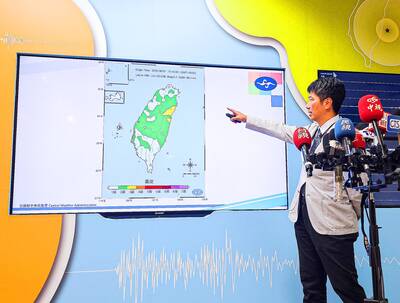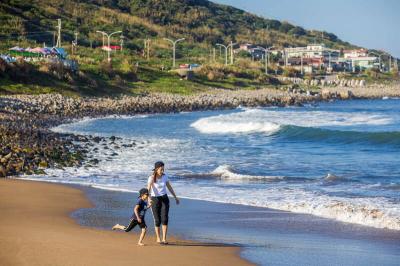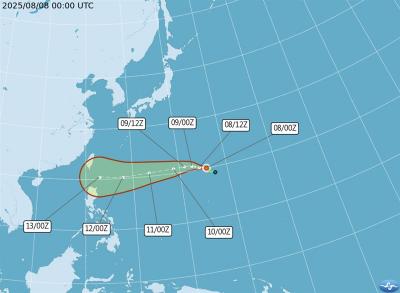A folk remedy from an herb known as “dung of the devil” because of its rank smell could lead scientists to new drugs for swine flu, a Taiwanese study said.
Extracts from the plant’s roots, bought from a Chinese herb shop in Taipei, were more potent against the (A)H1N1 virus in lab tests than was the prescription anti-viral medicine amantadine, a Kaohsiung Medical University research team wrote in a study scheduled for publication on Sept. 25 in the ACS Journal of Natural Products.
The pungent plant, Ferula assafoetida, is a flu folk remedy of long standing and was used during the 1918 Spanish flu pandemic, the scientists wrote. Its individual compounds had never been studied systematically, they said. Among other uses, the herb has also been employed in folk medicine for cancer, HIV and rheumatism.
The study shows compounds from the plant “may serve as promising lead components for new drug development against influenza A(H1N1) viral infection,” the scientists wrote.
Researchers treated some virus-infected cells with compounds extracted from the devil dung plant and others with amantadine, a generic drug. Most of the compounds were better at killing the virus than the existing medicine, the researchers wrote. Current strains of H1N1 are resistant to amantadine, the US Centers for Disease Control and Prevention wrote in interim recommendations on Tuesday.
Such lab tests are not proof that a medicine works, but could be precursors to trials of a new compound in animals and eventually humans.
H1N1 influenza has become the world’s fastest-moving flu epidemic, with cases in 177 countries since it was identified in April. US Centers for Disease Control and Prevention Lab tests confirmed H1N1 in at least 2,837 deaths and more than 254,206 infections as of Aug. 30, though most infected patients are not tested, the WHO said.

Aftershocks from a magnitude 6.2 earthquake that struck off Yilan County at 3:45pm yesterday could reach a magnitude of 5 to 5.5, the Central Weather Administration (CWA) said. Seismological Center technical officer Chiu Chun-ta (邱俊達) told a news conference that the epicenter of the temblor was more than 100km from Taiwan. Although predicted to measure between magnitude 5 and 5.5, the aftershocks would reach an intensity of 1 on Taiwan’s 7-tier scale, which gauges the actual effect of an earthquake, he said. The earthquake lasted longer in Taipei because the city is in a basin, he said. The quake’s epicenter was about 128.9km east-southeast

GENSLER SURVEY: ‘Economic infrastructure is not enough. A city needs to inspire pride, offer moments of joy and foster a sense of belonging,’ the company said Taipei was named the city with the “highest staying power” in the world by US-based design and architecture firm Gensler. The Taiwanese capital earned the top spot among 65 cities across six continents with 64 percent of Taipei respondents in a survey of 33,000 people saying they wanted to stay in the city. Rounding out the top five were Vietnam’s Ho Chi Minh City (61 percent), Singapore (59 percent), Sydney (58 percent) and Berlin (51 percent). Sixth to 10th place went to Monterrey, Mexico; Munich, Germany; Sao Paulo, Brazil; Vancouver; and Seoul. Cities in the US were ranked separately, with Minneapolis first at

The New Taipei City Government today warned about the often-overlooked dangers of playing in water, and recommended safe swimming destinations to cool off from the summer heat. The following locations in the city as safe and fun for those looking to enjoy the water: Chienshuiwan (淺水灣), Baishawan (白沙灣), Jhongjiao Bay (中角灣), Fulong Beach Resort (福隆海水浴場) and Sansia District’s (三峽) Dabao River (大豹溪), New Taipei City Tourism and Travel Department Director-General Yang Tsung-min (楊宗珉) said. Outdoor bodies of water have variables outside of human control, such as changing currents, differing elevations and environmental hazards, all of which can lead to accidents, Yang said. Sudden

Tropical Storm Podul has formed over waters north-northeast of Guam and is expected to approach the seas southeast of Taiwan next week, the Central Weather Administration (CWA) said today. The 11th Pacific storm of the year developed at 2am over waters about 2,660km east of Oluanpi (歐鑾鼻), Pingtung County — Taiwan's southernmost tip. It is projected to move westward and could have its most significant impact on Taiwan on Wednesday and Thursday next week, the CWA said. The agency did not rule out the possibility of issuing a sea warning at that time. According to the CWA's latest update, Podul is drifting west-northwest